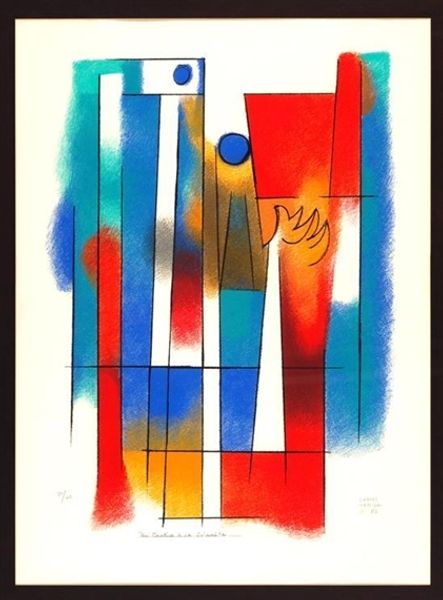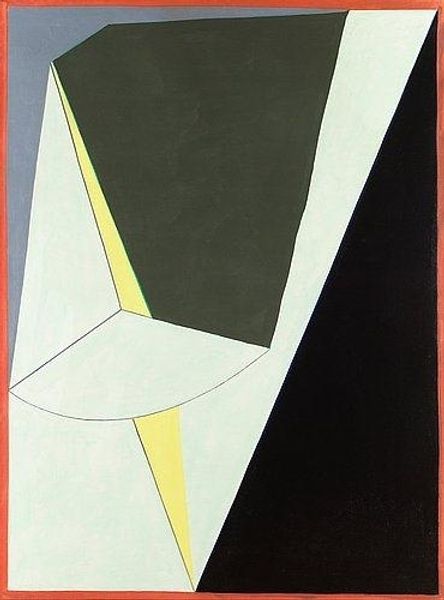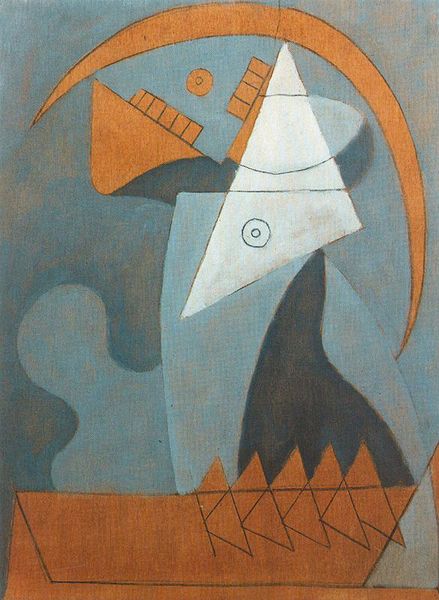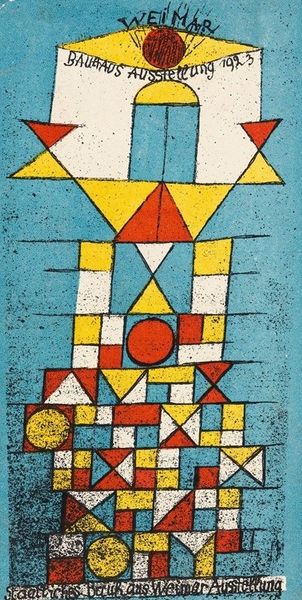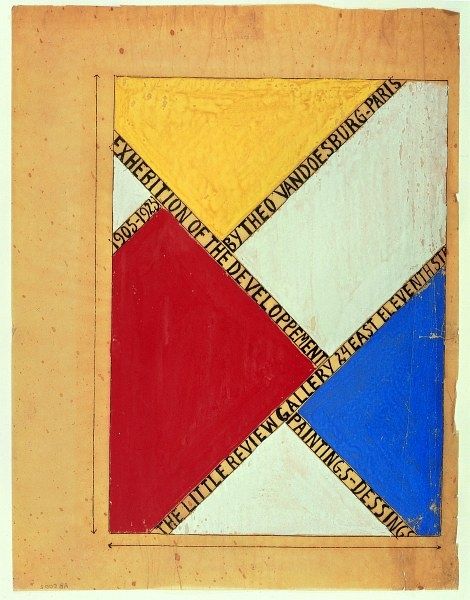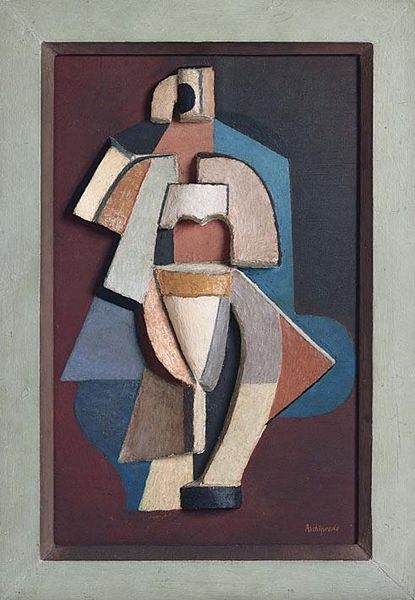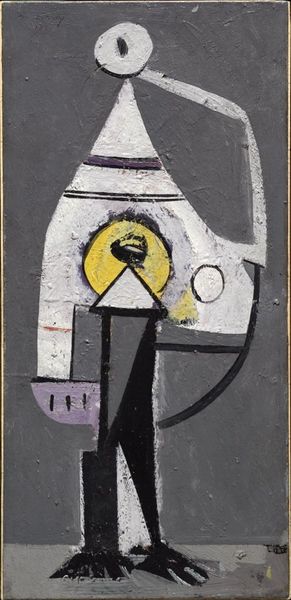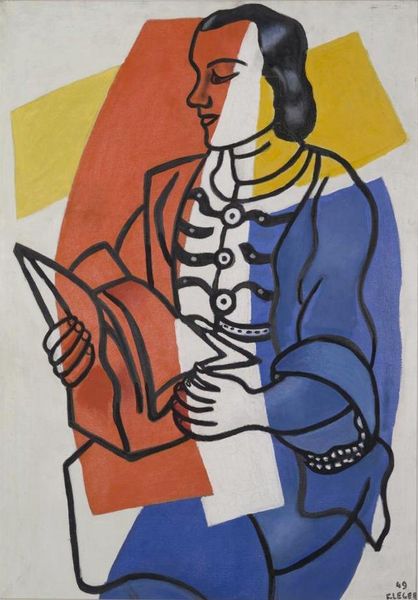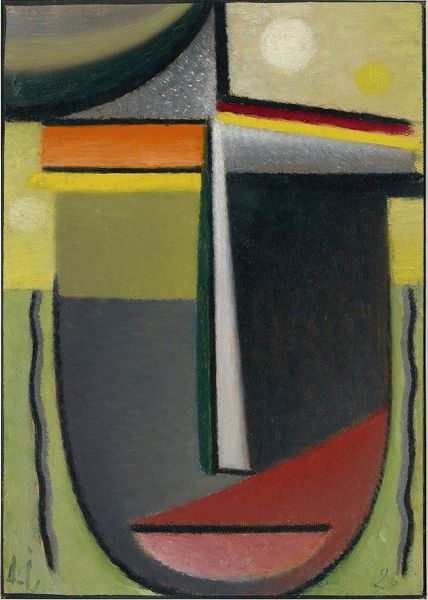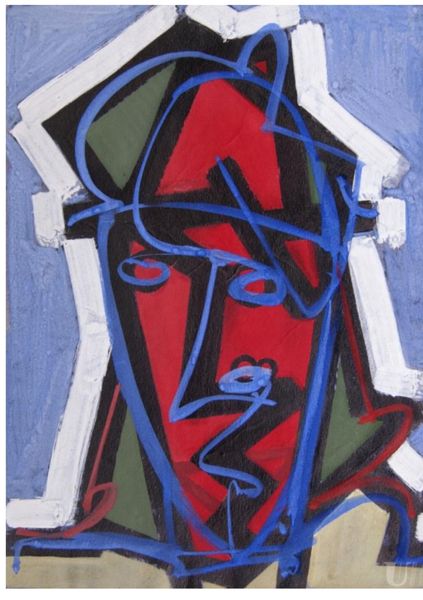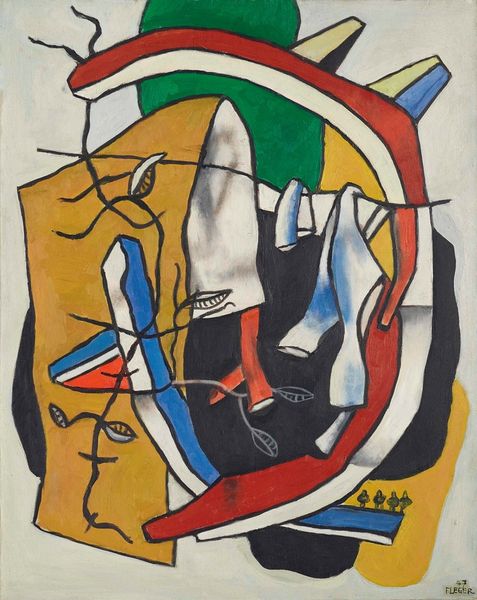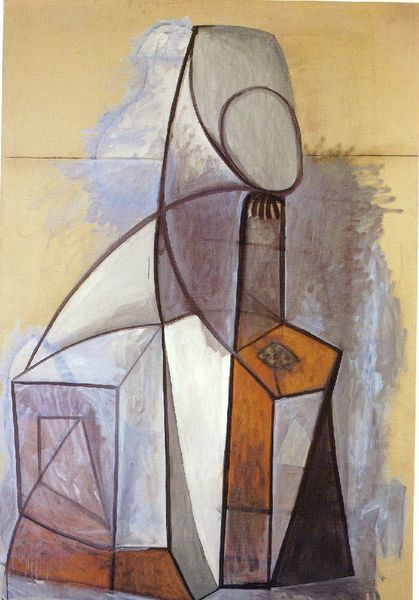
tempera, painting
#
portrait
#
cubism
#
tempera
#
painting
#
geometric
#
expressionism
#
abstraction
Copyright: Public domain
Curator: Look at this tempera painting by Josef Čapek, completed in 1915. It’s titled "Sportovec s červenou hvězdou" or "Athlete with a Red Star" in English. Editor: My first impression? It’s a striking image, almost like a stylized robotic figure, built from basic geometric shapes and dominated by that vivid, primary color palette. Curator: Yes, the geometric forms are crucial. We see influences from Cubism, particularly in the way Čapek breaks down the human form into simplified shapes and planes. But there's also a touch of Expressionism here, particularly in the raw energy of the brushstrokes. Considering its creation during World War I, the abstraction perhaps speaks to the dehumanization brought on by conflict. Editor: And that red star? Stars carry such symbolic weight, of course. What does it signify here? In 1915, could this be linked to an emerging sense of political identity, a nascent nod towards socialist ideals? It definitely complicates the figure—is he an athlete, or is he a symbol? Curator: Exactly! The layering of meanings is fascinating. And the title itself points towards ideas about the body, about physical prowess and its potential role in serving the nation. The star may anticipate or reflect sympathy with the burgeoning Bolshevik movement; considering the widespread sociopolitical change at the time. Perhaps Capek questioned the concept of an idealized masculine identity connected to nationalist aims. Editor: The choice of tempera is also important to consider. The colors are incredibly vibrant but also slightly muted, lending the artwork a primitive quality which many early 20th-century artists searched to explore authentic feelings. This adds an element of timelessness, yet, that rigid geometric structuring adds an aspect of hyper-modernity. It seems paradoxical. Curator: It really does invite complex interpretations. Knowing that Čapek later resisted totalitarian regimes and was, tragically, imprisoned for his beliefs adds a layer of gravity to this early work. Editor: Absolutely. It underscores the complexities of artistic and political expression in the early 20th century. These vibrant geometric forms take on an incredible density when viewed through a biographical or historic lens. Curator: For me, the tension between the sharp abstraction and the powerful, emotional symbolism is where the artwork finds its profound voice. Editor: And it really invites us to reflect on how symbols resonate in differing historical and cultural moments. I’ll keep considering what this symbol suggests to me over time.
Comments
No comments
Be the first to comment and join the conversation on the ultimate creative platform.

